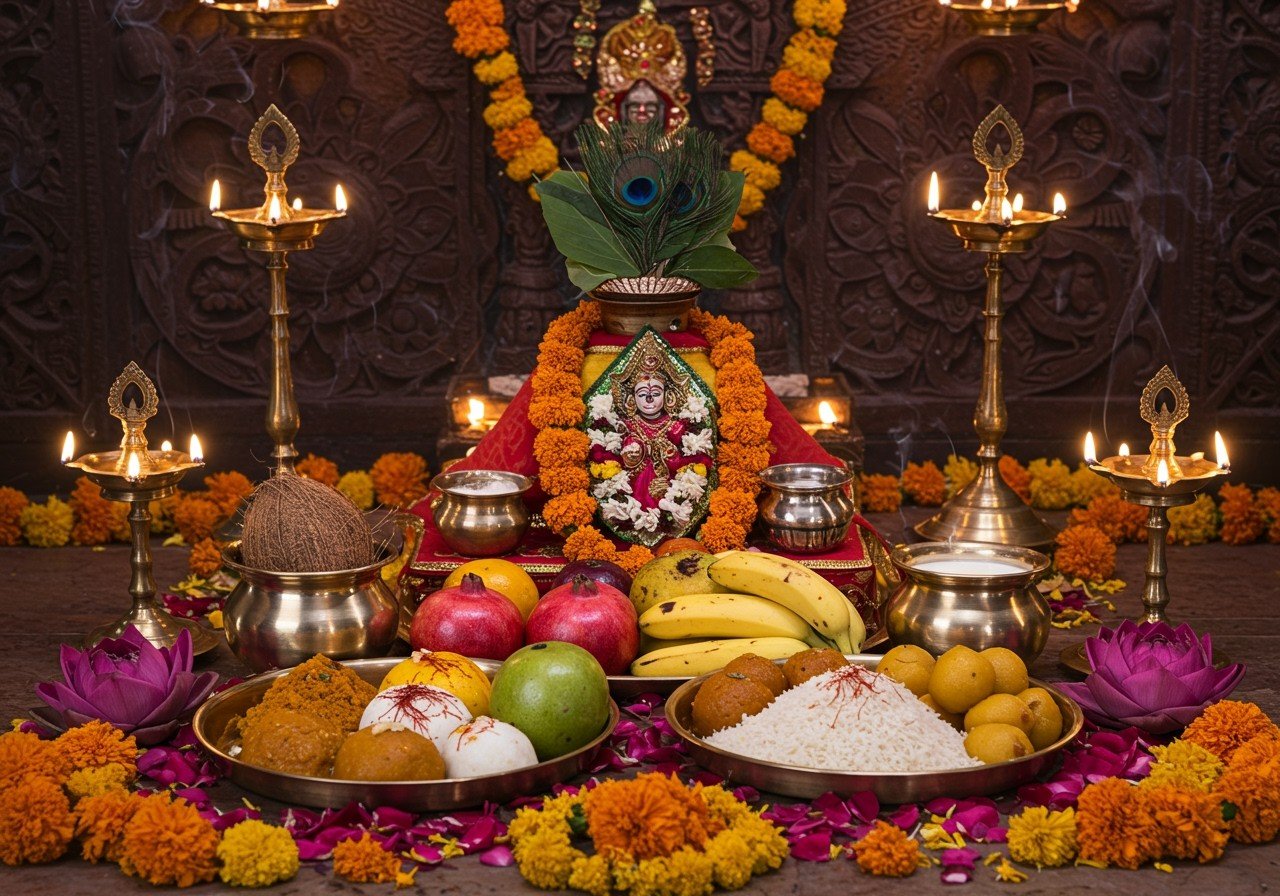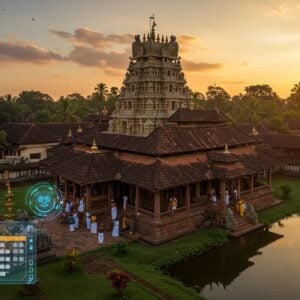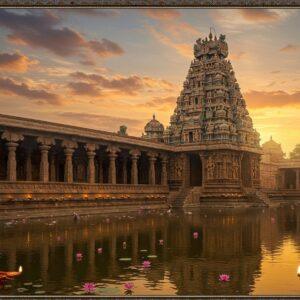
In Hinduism, Bhog is more than just food; it’s a profound expression of devotion, gratitude, and love offered to the deities. It’s a beautiful way we connect with the divine, acknowledging that all sustenance ultimately comes from a higher power. We believe that the offering is blessed by the deity, transforming it into Prasad, a sacred food then shared and consumed by devotees. This act of sharing strengthens our community bonds and reinforces our connection with the divine.
The Significance of Bhog
Offering Bhog is deeply meaningful in our culture. It’s a humble gesture of thanks, recognizing the divine source of all we have. The act of offering sanctifies the food, making the meal a spiritual experience. And when we share Prasad, we’re not just sharing food; we’re sharing a blessing, fostering a sense of togetherness and spiritual connection within the community.
- Gratitude and Humility: Offering Bhog is a way of expressing our heartfelt gratitude to the divine, recognizing that everything we have comes from them. It’s a humbling experience that connects us to something larger than ourselves.
- Spiritual Connection: The act of offering Bhog creates a powerful spiritual link between the devotee and the deity. It’s a moment of communion, where we offer our love and devotion, and receive blessings in return. This deepens our faith and understanding of the divine.
- Purification: Bhog isn’t just about the food itself; it’s about the transformation it undergoes. Through the act of offering, the food becomes sanctified, elevated from a simple meal to a sacred offering imbued with divine energy.
- Community and Sharing: Sharing Prasad is a core aspect of the Bhog tradition. It’s a way for us to come together as a community, sharing not only food but also blessings and spiritual connection. It strengthens our bonds and reminds us of our shared faith.
Types of Bhog Based on Our Debts of Gratitude
Our scriptures speak of five essential offerings, each representing a different aspect of our interconnectedness:
- Deva Rina (Debt to the Gods): This offering is a direct expression of devotion and gratitude to the divine forces that guide and protect us. We offer the best of what we have to honor them.
- Rishi Rina (Debt to the Sages): We honor the ancient sages and seers who have preserved and passed down spiritual wisdom through generations. This offering acknowledges their invaluable contribution to our spiritual heritage.
- Pitru Rina (Debt to the Ancestors): This offering is made to our ancestors, expressing our respect and seeking their continued blessings. We acknowledge their role in our family lineage and the sacrifices they made for us.
- Manushya Rina (Debt to Society): This reminds us of our responsibility to give back to society and support those around us. It’s a recognition of our interconnectedness and the importance of contributing to the well-being of others.
- Bhuta Rina (Debt to All Beings): This offering reflects our respect for all living creatures, large and small. It’s a reminder of our place within the web of life and the importance of living in harmony with nature. This includes our guests and the wider world.
Bhog Offered to Different Deities
Just as we have different preferences in our daily lives, different deities are believed to be pleased by specific offerings. These choices reflect the unique qualities and stories associated with each deity.
- Lord Shiva: Offerings to Lord Shiva often include milk, honey, and Panchamrit (a sacred mixture of milk, curd, honey, sugar, and ghee). Devotees also offer Malpua, Thandai, Lassi, Pakoras, and Halwa. You can easily buy pure siddhi from this link, used specifically as a Bhog offering for Lord Shiva.
- Lord Vishnu: Lord Vishnu is often offered Kheer or semolina Halwa. These sweet dishes symbolize prosperity and abundance.
- Lord Krishna: Lord Krishna is known for his love for a variety of foods, especially sweets and dairy. The Chappan Bhog, a grand offering of 56 dishes, is a testament to this. Makhan (butter) and Mishri (crystallized sugar) are also beloved offerings. Learn more about sacred offerings in Hindu rituals.
- Lord Ganesha: Lord Ganesha is particularly fond of Modak, a sweet dumpling made of rice flour, jaggery, and coconut, and Laddu, another sweet treat. These offerings are often made during Ganesh Chaturthi celebrations.
- Goddess Durga: Offerings to Goddess Durga include Kheer, Malpua, sweet pudding, Puran Poli, bananas, coconut, and sweet chapatti, as well as Halwa. These dishes reflect the strength and nourishment she provides.
- Lord Hanuman: Lord Hanuman is offered Jaggery and roasted Chana (black gram) as a sign of devotion and respect. Buy best quality barley from here.
Specific Bhog Thalis for Different Pujas
Different pujas and festivals often have specific Bhog Thalis (platters) associated with them, each carefully curated to honor the specific deity and occasion.
- Krishna Bhog Thali: This elaborate thali typically includes a diverse range of grains, fruits, dried fruits, sweets, beverages, namkeen (savory snacks), and even pickles, representing the abundance and joy associated with Lord Krishna.
- Navratri Bhog Thali: During Navratri, each day has specific offerings. For example, coconut is offered to Maa Mahagauri on the eighth day, and til (sesame seeds) is offered to Maa Siddhidatri on the ninth day. Offerings made of Dasha Mrittika or Sapta Jal are also popular.
- Shiv Bhog Thali: Kheer and Panchamrit are common offerings in a Shiv Bhog Thali. These cooling and nourishing dishes are believed to please Lord Shiva.
- Ganesha Bhog Thali: A variety of Modaks, both sweet and savory, are central to the Ganesha Bhog Thali, reflecting Lord Ganesha’s love for this particular treat.
- Satyanarayan Bhog Thali: The Satyanarayan Bhog Thali often includes bananas, semolina (rava/sooji), sugar, pure ghee, milk, and basil leaves, ingredients considered pure and auspicious. Buy pure cotton dhoti for Satyanarayan Puja from this link.
- Sankranti Bhog Thali: The Sankranti Bhog Thali varies regionally but often includes Til Laddoo, Puran Poli, Khichdi, Pongal, and other seasonal dishes.
- Lakshmi Bhog Thali: Rice Kheer is a typical offering in a Lakshmi Bhog Thali, symbolizing prosperity and abundance.
- Durga Puja Bhog: In Bengal, the Durga Puja Bhog is a grand feast, often including Bhoger Khichuri, Shorshe Diye Shobji, Dhokar Dalna, and various other delicious dishes. Buy best quality clay diya from here.
Poojn.in: Your One-Stop Shop for Bhog Offerings
At Poojn.in, we understand the importance of having authentic and high-quality ingredients for your Bhog offerings. We offer a wide range of products to help you prepare and offer Bhog with ease and reverence. You can explore our selection at https://www.poojn.in/product-category/holy-food.
We provide a variety of options, from individual ingredients to complete Bhog Thali sets, ensuring that you have everything you need for a fulfilling and meaningful puja experience.
Embracing Bhog in Our Daily Lives
Bhog is more than just a ritual; it’s a way of life. It encourages us to be grateful for what we have, to connect with the divine, and to share our blessings with others. By incorporating the principles of Bhog into our daily routines, we can cultivate a deeper sense of spirituality and community. Whether it’s a simple offering at home or a grand celebration in a temple, Bhog enriches our lives and strengthens our connection to our rich cultural heritage. You can check this blog for more detailed information on Hindu rituals.


